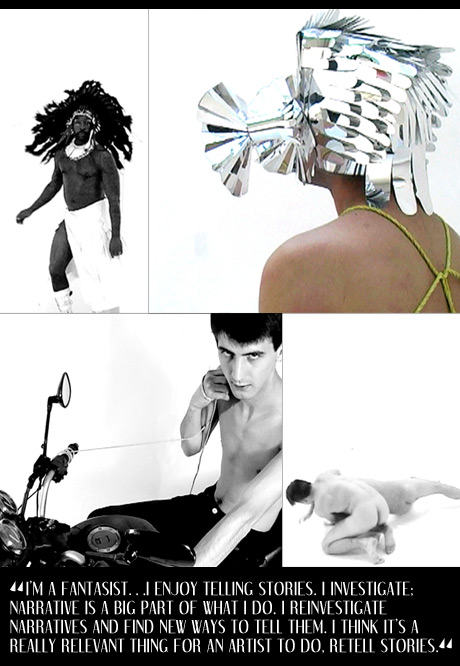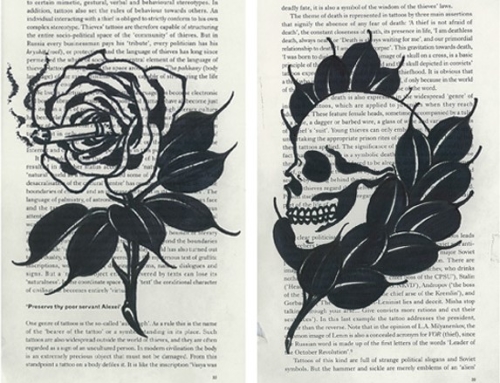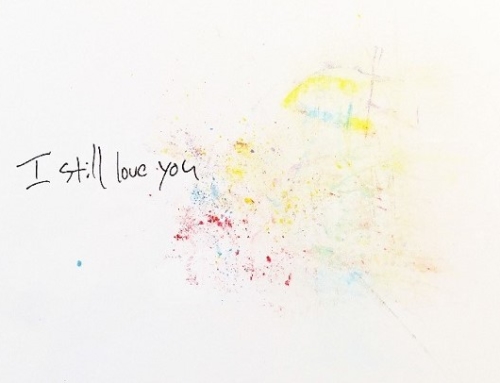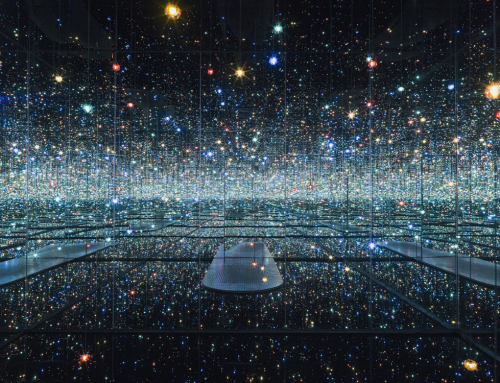It’s a new year and what better way to kick things off then with a history lesson, or in the case of Adham Faramawy’s exhibit: Legend II, an inquiry into the transformation of history into linear storytelling.
Unassuming in everything from his dress to the way he gestures to passers-by he recognizes at the café, the multi-media artist’s work has garnered international recognition, showing at Anna Kustera Gallery in New York, MAK Museum, in Vienna, and The Black Mariah Gallery in Cork Ireland.
Taking his cue from ancient Egyptian and Hellenistic Greek works, Faramawy’s reinterprets his subject matter by way of the codes and materials of Modernism.
The combination of photographic works showcased upon reflective surfaces and figurative sculptures anchored in narrative, evoke a sense of self-reflexivity, lulling the viewer into the storytelling process itself.
Launching January 13th at London’s Aubin Gallery, I caught up with the native Londoner at No-One café in Shoreditch to talk oral traditions and the construction of myth.
In Conversation:
FILLER: Tell me a bit about Legend II.
Adham: It’s kind of an exploration of narrative and that genre. It’s going to be comprised of two films, some sculpture, some figurative sculptural work, and some black mirrored prints.
F: Was there ever a Legend I, we don’t remember hearing about it?
A: No (laughing). The name is to do with the sequel and repetition and denigration…you know like the way you get the repetition of an idea or a story. With legends that kind of builds on it, but it takes it further away from the origin.
F: Oxford dictionary aside, what does “legend” mean to you?
A: The way that I have tackled the concept is in terms of multiplicity. It’s more to do with how many meanings there are to the word legend, not so much just the one fixed idea.
F: How does this work differ from past collections?
A: It’s the first time in several years that I’ve shown objects, like sculptural work and print. I’ve done a lot of performance and I’ve done a great deal of video. And the only time that they have become very physical beyond the projection of light is the TV stacks that I’ve done. So this is like there is going to be some actual physical evidence.
F: It’s also pretty heavily steeped in history.
A: For this show I’ve looked at the overlap between Hellenistic Greek sculpture and ancient Egyptian sculpture around the time of Alexander the Great. There is this really interesting period of sculptural output because of the invasion.
F: The invasion led to lots of hybridity I imagine.
A: They used to practice their syncretism where they would overlap gods from the ancient pantheon. So you would get two different gods becoming one and taking on each other’s characteristics. And then you’d have sculptures made of that god with overlaps. I think that was very succinct and interesting way of expressing this new personality type who has no fixed roots, but instead exists between places.
F: And the storytelling element, how did you approach that?
A: I’m a fantasist…I enjoy telling stories. I investigate; narrative is a big part of what I do. I reinvestigate narratives and find new ways to tell them. I think it’s a really relevant thing for an artist to do, retell stories. Up until now I’ve very much dealt with mythologies. But now I’ve had a shift in perspective and try to deal with this concept of legend, which has a root in history, or historical perspective.
F: On the topic of roots, you’re a London native who’s done a lot of work abroad, all your solo shows in fact; do you still consider yourself a part of the scene here?
Not really, I don’t know. I don’t think so. It’s hard to say what that is so…
F: But once upon a time you were a member of !WOWOW!?
A: Yeah (laughing)…we were South London. It was a really interesting time in my life, and it was a very positive experience to be associated with all the people I worked with. But we were just a group of friends at art school when it comes down to it. We were all just going to school at the same time and it was very, very organic.
F: Sounds like you think of yourself more as an independent artist.
A: Yeah, I am. I wish I could come up with a more interesting structure for you. I collaborate a lot, but I am an independent artist. I function by myself under my own name.
F: The collaborations you talk about, that’s included some work in the fashion industry, no?
A: I used to share a studio with a designer called Carri Munden [aka] cassetteplaya back in… god I don’t even remember now, it’s been over five years. So that was maybe the last fashion thing I did. That’s my memory.
F: Do you remember if you liked it?
A: Yeah, it was a very positive experience. Being part of the of the youth culture that rose up because of her and the film work we did, and all of the people that styled. Yeah, it was an interesting experience.
F: Which artists are you into at the moment?
A: I like the work of Ryan Trecartin who is a video artist. I also really like the installation work of AIDS 3D. I’m a big, big fan of Kembra Pfahler of the…what’s the name of that band…The Voluptuous Horror of Karen Black. I think they are wonderful. Who else, that’s enough…that’s three…that’s loads!
F: Yeah, three is plenty! So what’s next for you?
A: I would like to finish the book project that I’ve been working on for almost two years now. It’s taken such a long time. It got delayed, as these things do. But yeah, I would really love to get it finished. Because of the time constraints, it was supposed to be finishing I started work on this show and I couldn’t concentrate on both at the same time. But back to the book after this show!
Legend II will be on exhibit at the Aubin Gallery from January 13th – Febuary 20th. For more information, please visit www.aubingallery.com.















